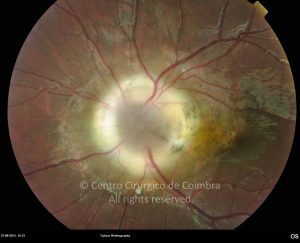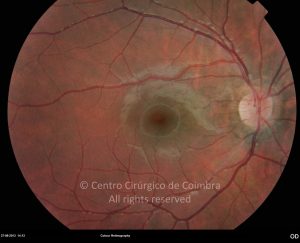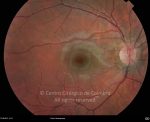Morning glory disk anomaly is a congenital malformation of the optic disk, usually unilateral. Affect women more than men with a ratio of 2:1. Fundus findings includes a large papilla with indistinct border surrounded by depigmented areas with a funnel-shaped optic nerve head, a hyperplastic glial tissues, white and elevated, occupying the central disc with thin and straight vessels radiating out. The peripheral retina and fovea are normal. Patients may present strabismus, amblyopia, nistagmus, or leukocoria. The visual acuity usually is poor and there is an increased risk of non-rhegmatogenous retinal detachment.
This syndrome is often associated with midline facial defects and severe anomalies of the central nervous system. It may be associated with the papillorenal syndrome (PAX2 gene mutation).
Differential Diagnosis
- Retinoblastoma
- Optic disc pit
- Optic Disc Coloboma









